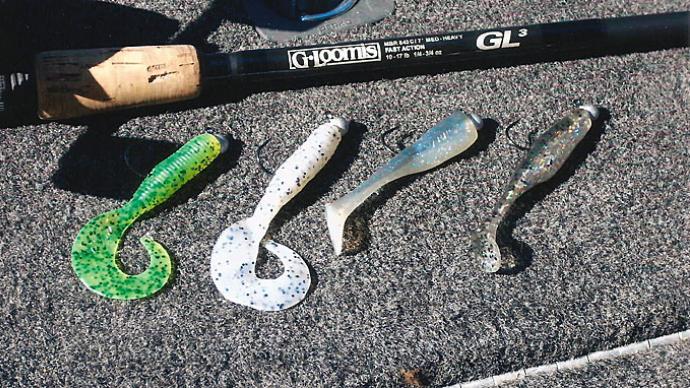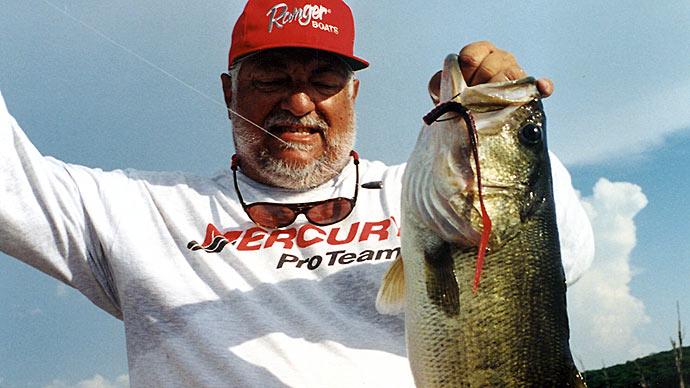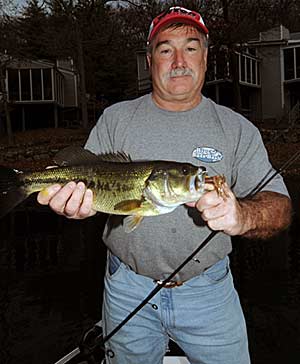
When Greg West weighed in the biggest bass of the 2017 BassingBob Winter Bass Challenge, most tournament competitors knew what lure tricked the big fish.
The lure produced his big bass weighing 8.24 pounds and a couple of 4-pounders that helped West and Sheldon Gentry (a former Red Man All-American qualifier) win the Lake of the Ozarks tournament with a five-bass limit weighing almost 21 pounds.
West knows he has a good chance of winning a tournament if he catches bass on his confidence bait during practice. “If I come into a tournament with only one rod sitting on the deck, then (the competition) is in trouble because I have been catching them,” he says.
West’s confidence bait is a Chompers Skirted Grub that he attaches to a brown 1/4- or 3/8-ounce Chompers Stand-Up Jig Head. He believes the skirted double-tail plastic grub imitates a crawfish, a high protein forage for bass. The Missouri angler opts for a green pumpkin grub, which he colors the tails with chartreuse dye.
The skirted grub produces for West most of the year except during the summer months of June to August, when he relies mainly on a 10-inch plastic worm. He notes the grub is especially effective in cold water. “The colder the water, the better,” he said. “I catch many fish on it in 30- to 40-degree water.
“It is just something with a slow presentation of dragging it on the bottom,” said West, the co-owner of the Bass World Sports tournament circuit. “I can slow it down and work it slowly through brush.”
A 7-foot medium-heavy action spinning rod and a spinning reel are West’s gear choices for dragging his Chompers grub. He likes to match his grub with spinning gear because it handles lighter line better, and he can also skip the lure easier under dock cables.
West favors throwing the grub on low-visibility green 8-pound P-line monofilament line in colder water and upgrades to 10-pound test for fishing in warmer water or fishing behind docks. West prefers the lighter line because he thinks it helps him get more bites. “I lose a fish once in a while, but you got to get the bite first,” he says.
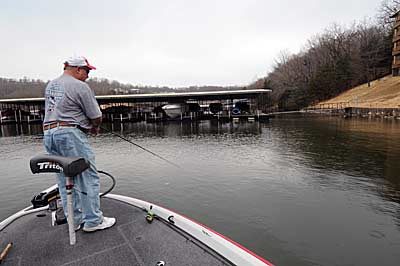
The abrasion resistance of his monofilament line is critical for West when he constantly drags the Chompers grub over rocks and brush. “If I get a little nick or two in that line, it is still as strong as it can be,” he says.
The versatility of the skirted grub allows West to work it over various bottom structure and around cover such as rocks, docks, brush piles, and logs. He likes to fish it in the spring along pea gravel bottoms where bass are staging for the spawn. West targets chunk rock banks and concrete sea walls during fall for his grub fishing. His favorite winter spots for fishing the grubs are concrete walls mixed with rock riprap, where bass tuck up next to the rocks for warmth.
The Chompers grub has produced bass for West in depths ranging from 1 foot to 25 feet. West drags the grub most of the time on the 3/8-ounce jighead but will switch to the 1/4-ounce model when he needs to fish behind docks because the lighter jighead is easier to skip under the dock cables.
West’s standard grub retrieve is a slow stop-and-go dragging presentation along the bottom. “I just make sure I keep my rod pointed down to the water, and I drag it a couple of inches if it is frigid water,” he says. “When the water starts warming, I can move it faster to cover more water.”
The tournament veteran discovered a new twist to his grub retrieve when he dropped an old log in his swimming pool to see how the lure worked around the cover. “When I would pull it up to the log, rather than pick up the bait to keep it from getting hung, I would just leave it right there against the log,” West says. “I would bump the lure real easy with a twitch of my rod, and I could see the lure’s head turning and the legs flopping up and down.”
West started employing the new trick whenever his grub bumped into a log and began catching bass that would snatch the lure off the cover. “It is amazing how the fish will come up and hit it on that log,” he says.
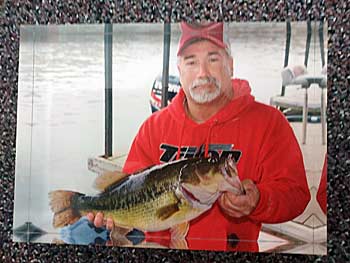
The Chompers grub is also an effective sight fishing lure for West when he finds a spawning bass on a nest. He agitates the spawning fish with multiple presentations into the bass’ nest. “I just keep throwing it at the fish and getting the lure out in front of its face and bug it to death,” West said. “When the fish hits it, there is no doubt. It is fun when you are using 8- or 10-pound line and have a 6-pounder hit it with only 10 feet of line out.”
Even though he uses lighter line with his grub, West still tightens his reel’s drag down hard. When fighting a bass, he would rather back reel or follow the surging fish with his rod rather than rely on the drag releasing line, especially when the fish is around brush. West usually gets on his trolling motor and moves the boat closer to the brush pile, where he tries to lead the fish out of the brush and wear it down in open water.
West suggests the skirted grub’s fish-catching abilities make it an excellent lure for beginners. “They will go out there and catch a lot of small fish on it, but then they will get a big one or two,” he says. “Everybody thinks the big fish don’t hit that lure, but they do. It is just a matter of getting it in their face where they can see it.”


